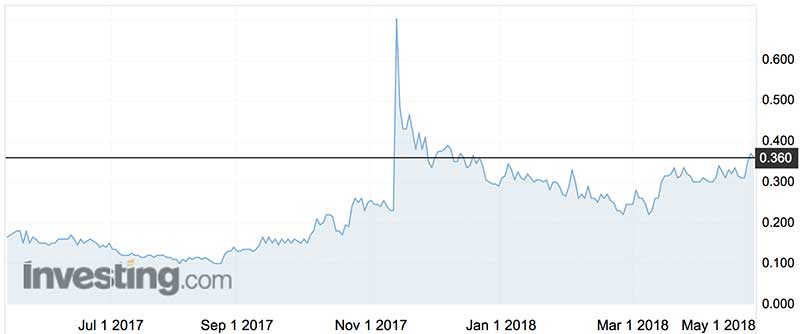What’s next for Great Boulder (which doubled after Barry last covered it)
Mining
Mining
Great Boulder Resources has more than doubled in price since Barry FitzGerald mentioned it as an explorer to watch in his weekly Garimpeiro column.
Great Boulder (ASX:GBR) was last covered in this column in September on the strength of its Mt Venn copper-nickel-cobalt project east of Laverton in Western Australia.
What was a 15c stock then has become a 36c stock, with Mt Venn continuing to provide the driving force.
The latest leg up for the stock came from geophysical work at the Eastern Mafic complex, about 7km from Mt Venn where extensive copper-nickel-cobalt sulphide mineralisation has previously been identified.
The Eastern Mafic has only ever been tested for its gold potential by past explorers.
But with its encouragement at Mt Venn, and promising geochemical sampling results, Great Boulder decided it was time to fly an electromagnetic (EM) survey.
The results are in and Great Boulder is pretty pleased with the results.
The survey identified multiple conductors over a 6km strike length. “Importantly, these conductors are considered highly prospective because of their ‘late-time’ (slower) EM response, which is indicative of a bedrock source,’’ Great Boulder said.
Its technical lesson continued: “Mineralisation at Mt Venn, which remains open in every direction, is copper dominant and indicative of late-stage formation within the intrusion.’’

“The Eastern Mafic complex was targeted because its geochemical signature suggested an earlier stage of formation, meaning it is potentially closer to the source of the intrusion and therefore prospective for massive sulphide mineralisation,’’ Great Boulder said.
Feeding in to the excitement about the EM survey results is previous aircore drilling which returned anomalous copper and nickel coincident with the airborne EM conductors in a preliminary analysis.
“These results support Great Boulder’s view that the Eastern Mafic complex has the potential to host significant massive sulphide mineralisation,’’ the company said.
What’s next
The next step in the hunt for the intrusion feeding the broader Mt Venn mineralised system is a ground based EM survey.
It will better define the strongest of the late-time conductors indentified in the airborne EM survey and the final geochemistry results ahead of them being tested with the drill bit in a maiden program targeted at the Eastern Mafic’s copper-nickel-cobalt sulphide potential.
Great Boulder managing director Stefan Murphy is excited as they come.
“These results reveal an exceptionally large number of strong late-time conductors which show the Eastern Mafic complex has the potential to host significant massive sulphide mineralisation.’’
“We have now identified over 25 discrete, late-time conductors located in a part of the intrusion previously identified as having elevated copper, nickel and cobalt.
This geochemical anomalism has been confirmed with preliminary XRF (a hand held minerals analyser) field assays, extending the copper-nickel-cobalt footprint to over 4km in the core of the intrusion and even further along the eastern shear zone.”
Still, Murphy would be the first say that proof of the Eastern Mafic’s nickel-rich “feeder’’ status will be in the drilling.
A pathway to something special
As mentioned here last September, Mt Venn was originally a fifth-ranked exploration project when Great Boulder raised $6.1 million in its 2016 IPO.
It climbed the rankings thanks to a water bore hole drilled in 2015 by Gold Road (ASX:GOR) which is now developing the 6 million ounce Gruyere gold deposit in a joint venture with South Africa’s Gold Fields.
Gruyere lies about 30 km west of Mt Venn and as part of its water needs Gold Road set out to indentify regional palaeo-channels in an airborne survey.
Up popped an anomaly on the common boundary between one of Gold Road’s tenements and Great Boulder’s Mt Venn ground.
A drill hole by Gold Road in 2015 returned elevated copper and nickel.
But it wasn’t until Great Boulder re-assayed the hole that it confirmed primary bedrock sulphide mineralisation — with peak results of 1.7 per cent copper and 0.2 per cent nickel, with cobalt, gold and silver values.
That set Great Boulder on a pathway to confirming it could be on to something special.
This article does not constitute financial product advice. You should consider obtaining independent advice before making any financial decisions.